Who was Candia?
What were the features of his saintliness?
‘THE JOY OF THE GOSPEL fills the hearts and lives of all who encounter Jesus. Those who accept his offer of salvation are set free from sin, sorrow, inner emptiness and loneliness. With Christ joy is constantly born anew. In this Exhortation I wish to encourage the Christian faithful to embark upon a new chapter of evangelization marked by this joy, while pointing out new paths for the Church’s journey in years to come… A JOY EVER NEW, A JOY WHICH IS SHARED’ (Pope Francis Evangelii gaudium, n. 1)’.
Dr. Marcello Candia, a rich Milanese industrialist, spent all his money on, and dedicated his whole life to, the poor, lepers, the sick poor, the Indios, the Caboclos. The news of our time always brings us negative news: thefts, kidnappings, killings, wars, trials, etc. We need good news: the life of Marcello Candia is very good news!
‘Rich as he was, he made himself poor for your sake’ (2 Cor 8:9).
The three characteristics of his saintliness.
What Marcello Candia teaches us today.
I) ‘Rich as he was, he made himself poor for your sake’ (2 Cor 8:9).
When, if God so wills it, Marcello Candia (1916 -1983) becomes a Blessed and a saint, he will be the first industrialist of our time to be offered by the Church as a model for a Christian life heroically lived following the example of Christ. Here is a brief exposition of the four periods of his life.
1) The period of formation (1916-1945)
Marcello was born in Portici (Naples) on 27 July 1916 to Milanese parents. In 1906 his father Camillo had founded, in Milan, the ‘Italian Factory of Carbonic Acid Doctor Candia and Co.’ and brought up his children (Linda, Fernanda, Marcello, Emilia and Riccardo) according to the principles of honesty and hard work. Marcello’s mother, Luigia Mussato (Bice), an educated and very religious woman, transmitted to her children faith and charity towards the poor. Marcello was always to say that he learnt from his mother the foundations of his Christian life and from his father a deep sense of duty. He thanked the Lord for having been given such exemplary parents.
Marcello Candia remembered: ‘I had parents who gave me a zeal for life. I can say that my faith was taught to me by my mother, a faith in God very much bound up with love for neighbour. My mother Bice accompanied us, her children, in visiting and helping the poor and Sunday afternoons were usually dedicated to this. With the passing of the years, the vision of my responsibility towards those who suffer appeared to me in a much larger way. This was the origin of my missionary vocation’.
As a young man and thereafter, Marcello Candia displayed a strong religious spirit and a passion for works of charity – two characteristics that would remain fundamental throughout his life. This orientation towards God and his neighbour became exclusive after the death of his mother which took place on 7 February 1933 when he was seventeen years old. His very acute suffering as a result of this event constituted for him the decisive turning point in his life – that of a ‘radical choice for God’.
At that time a great Capuchin, Brother Cecilio Cortinovis, who had founded the ‘Work of St. Francis’ in Milan to help the poor, educated Marcello in active charity and love for the last with an uncommon spirit of sensitivity and respect for people. Candia’s university companions said that Marcello Candia led a ‘double life: on the one hand, an almost fanatical commitment to study, reading, and success in his exams (he took three degrees – in chemistry, biology and pharmacology); and, on the other, a readiness to give time, affection and money to the poor and the various works of charity that he began or encountered on his journey.
2) His years as an industrialist and his missionary vocation (1945-1965)
With the end of the war, in 1946 Candia took over the management of his father’s firm. His father retired and died in 1950. Marcello strengthened the company and it became one of the first in Europe in its field (chemicals) with the adoption of new methods of production. He showed that he was a capable and successful manager. One of the people who worked with him, Prof. Siro Lombardini, said in an interview to me: ‘He had an extraordinary money sense, everything he touched turned to gold!’ During the twenty years that went from 1945 to 1964, Marcello also dedicated himself to works of charity and mission. The following is a incomplete list of works that he founded and financed:
1945 – The ‘House of Mother and Child’, to accommodate about forty teenage unmarried mothers and their children. This work still exists today in Milan.
1947 – ‘The Mission’. This involved a review for missionary culture, a free clinic for the poor and missionaries, the collection and delivery of medical products to missions.
1948 – The ‘School of Medicine for Missionaries’ (priests, brothers and sisters) at the University of Milan, with a diploma in nursing of international value.
1950 – He went on his first trip to Amazonia with Msgr. Aristide Pirovano of the PIME, the founder and first bishop of the diocese of Macapà, who invited him to found a hospital for the poor people of his diocese. Marcello promised that he would soon visit him.
1954 – After a meeting with the Archbishop of Milan. Msgr. G.B. Montini, he began and financed the ‘College for Overseas Students’ in Milan with Prof. G. Lazzati.
3) Eighteen Years of Mission in Amazonia (1965-1983)
In 1964 Marcello Candia sold his company and all of his holdings in Italy and a year later left for Amazonia where he would spend all of his money and above all the last eighteen years of his life (he died in 1983 at the age of sixty-seven). Marcello returned to Italy every year to ask for prayers and help for his works after he had spent all his capital.
Candia built the St. Camillus and St. Louis Hospital in Macapà and entrusted it to a religious Congregation who assured its spirit and its continuity – the Camillians of Brazil. The ownership and administration of this hospital complex was given over to the Camillians. Candia reserved the right to live in a modest flat in the courtyard of the hospital which was called ‘la maloca’, a word used by the Indios to describe a hut. Even after the donation Candia continued to take an interest in the hospital. He gave it new equipment and every year supported it with notable sums of money that had been collected during his trips to Europe and which he wanted to be given for care for the poorest of the poor.
The hospital of Macapà was then the largest and most modern in Amazonia. Yet a building with two floors 110 metres long by the side of the road with a connected wing was not enough for Candia. In 1966 he made his first visit to the leper colony of Marituba in a forest near to Belem with Bishop Giuseppe Maritano of the PIME. He later sent help (kitchen machinery, typewriters, stoves, work instruments, etc.) to this colony.
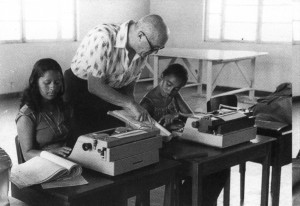 In Brazil, as in Italy, Candia was not satisfied with one or two works: after the hospital of Macapà and the leper hospital of Marituba (he took the men missionaries of the PIME and the women missionaries of the Immaculate Mary to this last), he built and financed other works: at the end of his life (31 August 1983) he had created and financed fourteen works, in which he was also involved as regards their management and the defence of their missionary spirit: hospitals, leper hospitals, the ‘Centre for Study and Research into Tropical Diseases’, social centres in ‘favelas’, two closed convents for women for the Carmelites (one in Macapà and the other in Belo Horizonte), a school for nurses, a centre for handicapped people and young people in distress, etc.
In Brazil, as in Italy, Candia was not satisfied with one or two works: after the hospital of Macapà and the leper hospital of Marituba (he took the men missionaries of the PIME and the women missionaries of the Immaculate Mary to this last), he built and financed other works: at the end of his life (31 August 1983) he had created and financed fourteen works, in which he was also involved as regards their management and the defence of their missionary spirit: hospitals, leper hospitals, the ‘Centre for Study and Research into Tropical Diseases’, social centres in ‘favelas’, two closed convents for women for the Carmelites (one in Macapà and the other in Belo Horizonte), a school for nurses, a centre for handicapped people and young people in distress, etc.
This amounted to tireless activity that was wonderful in a man who was no longer young in Brazil half a century ago where everything went slowly, with difficulties in making himself understood (he had not learnt Portuguese well), in finding competent people to work with, and in obtaining the permits that had been promised from the authorities. The military men who commanded in Brazil in the 1960s and 1970s suspected an industrialist who had come to spend his money amongst the poor of some kind of plot or other. They obstructed him and humiliated him in various ways!
4 – The Via Crucis of his final years (1982-1983)
The hardships and tensions to which Marcello subjected himself led between 1967 and 1977 to him having five heart attacks. On Good Friday 1977 (9 April) in San Paolo, Brazil, he was given a triple by-pass and the doctors advised him to go back to Italy if he wanted to survive. A month later Marcello was again in Macapà – he continued to have heart problems until the end of his life.. Often he had to massage his heart and legs – the cold he felt was terrible. And yet every year he went back to Italy during the coldest months (near to Christmas) in order to collect funds for his works, for his poor people.
Marcello Candia suffered from heart problems and feared that this condition would suddenly kill him. Instead he died of cancer of the liver. The last months of his life caused him tearing pain which was caused not only at a physical level because of the cancer he was suffering from but also at a mental level because of the many disappointments caused by the behaviour of a number of people – one person even accused him of having stolen money from lepers…
His physical collapse took place in May 1983. He continued to work with particular intensity until he left Belem for Italy on 10 August. Admitted to the St. Pius X Clinic of the Camillians in Milan, he died there on 31 August because of liver cancer and tumour of the bone over the right lung. Fr.. Forsenio Vezzani, a Camillian of the St. Pius X Clinic, wrote after his death: ‘I do not believe that our clinic will forget him easily. My religious brothers who are nurses in my department assured me that they had never seen a patient like him, that he never complained about anything and always gave thanks for everything. And yet a gravely ill patient such as he was, who suffered a great deal, has the tendency to complain. What amazed everyone, and made people understand that in this man there was something that was not common, was that he prayed a great deal, on his own and with other people. Until the last moment his thoughts were directed towards his poor people, the lepers, towards the works of charity and of the Gospel that he had founded’.



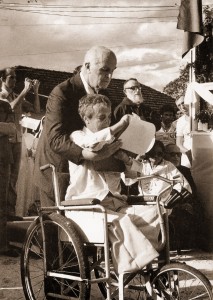






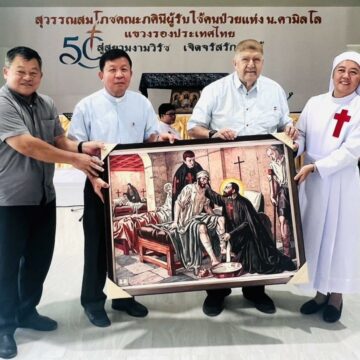
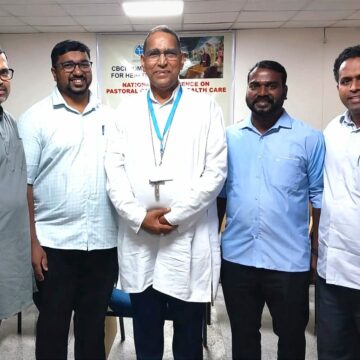
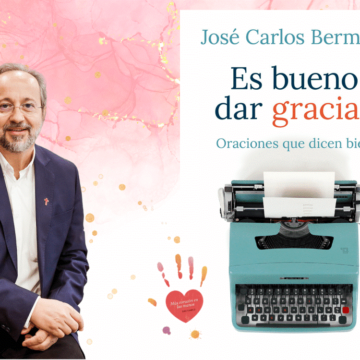

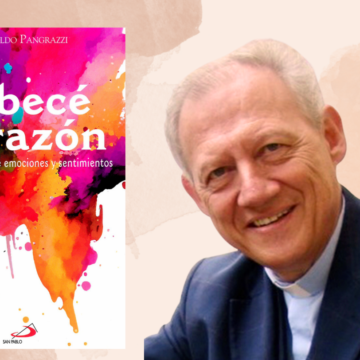
Camillians on Facebook
Camillians on Twitter
Camillians on Instagram